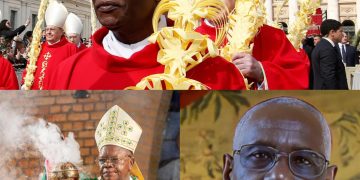Twenty-four years ago today, what was meant to be an exhilarating football match between Ghana’s top clubs—Accra Hearts of Oak and Asante Kotoko—descended into horror. The date, May 9, 2001, is etched into the national memory as the darkest day in Ghana’s sporting history. It was the day 126 people lost their lives at the Accra Sports Stadium in a disaster that would forever change the face of Ghanaian football—and leave a scar on the soul of the nation.
The match had all the hallmarks of a classic. Hearts of Oak staged a dramatic comeback, scoring two late goals to win 2–1. But what followed shattered the jubilation. Angry over a referee’s decision and their team’s defeat, Kotoko fans began hurling bottles and plastic seats onto the pitch. Riot police, stationed in anticipation of unrest, responded with force—firing tear gas into the crowd.
What came next was chaos.
Blinded by the gas and overcome by panic, thousands tried to flee. But with several gates locked and poor stadium design creating deadly bottlenecks, escape proved impossible for many. As fans surged toward limited exits, the crowd crush turned fatal. By the end of the hour-long nightmare, 116 had died of compressive asphyxia, and 10 more from trauma. Families were left shattered. Ghana was left in mourning.
In a shocking twist of fate, one fan, Abdul Mohammed, was mistakenly taken for dead. Only when someone stepped on his foot in the morgue did he regain consciousness—narrowly avoiding being buried alive. His survival story stands out in a day otherwise defined by tragedy.
Eyewitness accounts and official investigations painted a grim picture of what went wrong. The stadium was described by the Ghana Institute of Architects as a “death trap.” Medical staff had reportedly left before the disaster unfolded, and many of the gates were inexplicably locked. An inquiry blamed the police for overreacting with excessive force, accusing them of dishonesty and negligence. Six officers were charged with 127 counts of manslaughter but were ultimately acquitted due to insufficient evidence.
The aftermath prompted a national reckoning. President John Agyekum Kufuor declared three days of mourning. The Premier League was suspended for a month. In 2007, the stadium was renovated to meet FIFA standards, though maintenance issues have persisted over the years.
But out of the ashes of despair, a culture of remembrance has grown.
Led by former Asante Kotoko chairman Herbert Mensah, the May 9th Remembered movement was born. From street walks in Kumasi and memorial wreath-layings to prayers in mosques and support for victims’ families and their 148 children, the annual tributes have become a staple of Ghana’s sporting calendar. The symbolic “May 9th Cup” was introduced in 2016, and in front of the stadium now stands a bronze statue titled “I Am My Brother’s Keeper”*—a powerful reminder of the need for compassion in crisis.
Yet, for all the gestures and grief, some believe more must be done. Mensah has repeatedly called on the government to formally recognise May 9th as a national day of remembrance—so far, to no avail.
As Ghana remembers this solemn anniversary, one truth stands above all: May 9th is not just history. It is a call to vigilance, empathy, and national accountability.
Never again.










